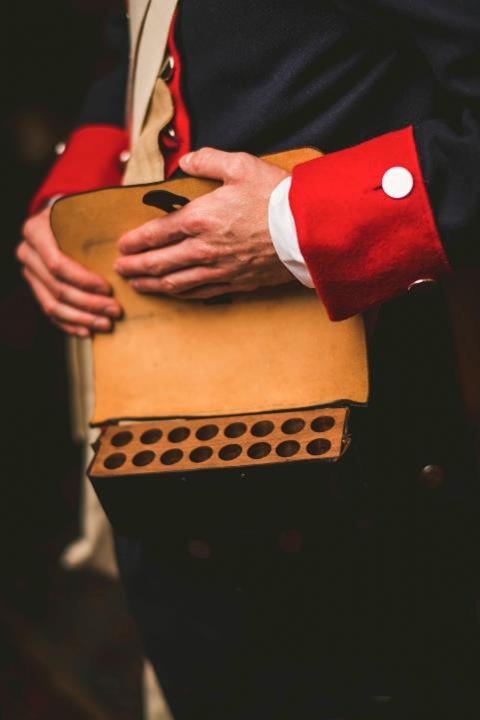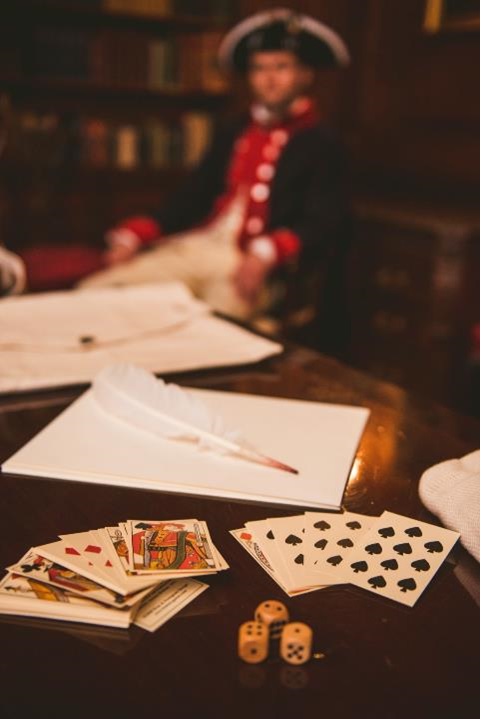The Continental Army
The Continental Army, authorized by the Continental Congress and commanded by George Washington, was a microcosm of the thirteen newly formed states. Men drawn from traditions and temperaments of maritime New England, the agricultural south and the rugged western frontier all combined to form America’s first official army. From 1775 to 1783, officers and soldiers of the Continental Army served in the field from the Siege of Boston to victory at Yorktown and the end of the conflict. Throughout those eight years, the army was transformed from a fledging group of untrained amateur soldiers to a well-trained fighting force that could compete with the world-renowned British Army.
The First Virginia Regiment
On the eve of the American Revolution, Virginia Great Britain’s largest and most populous colony. As tensions increased between Britain and its North American colonies, Patrick Henry called Virginia to arms in his March 23, 1775 “Liberty or Death” speech. The First Virginia Regiment was raised the summer of 1775 and Henry was commissioned its colonel. During service in the Continental Army, the regiment fought in many battles of the war including Harlem Heights, Trenton, and Princeton, and wintered at Valley Forge. The British captured many of the soldiers of the regiment in the surrender of Charleston, South Carolina in May 1780. A reconstituted First Virginia Regiment, consisting of veterans and new enlistees, saw service for the rest of the war.
Reproduction Clothing and Equipment
The trunk includes clothing representing a soldier in the First Virginia Regiment. The coat complies with Washington’s orders for a Virginia uniform: blue with red facing. In addition to the coat, a soldier would wear a tricorn hat, white work shirt, stock (necktie), waist coat, and pants. Soldier carried haversacks containing paper and quill for letters home, and dice and games for amusement. He also carries candles, extra stockings, a canteen, and a cartridge box. Soldiers, mostly officers who could afford them, sometimes commissioned small paintings of themselves called portrait miniatures. Often in uniform, these small works of art were given to family, friends, and loved ones.
Additional Lesson Plans and Links
The Legacy of America’s First Veterans – The American Revolution Institute
The Fight for Independence: A View From the Front Lines – The American Revolution Institute
An Eighteenth-Century Smartwatch? – The American Revolution Institute
Hardships of the Continental Army – The American Revolution Institute
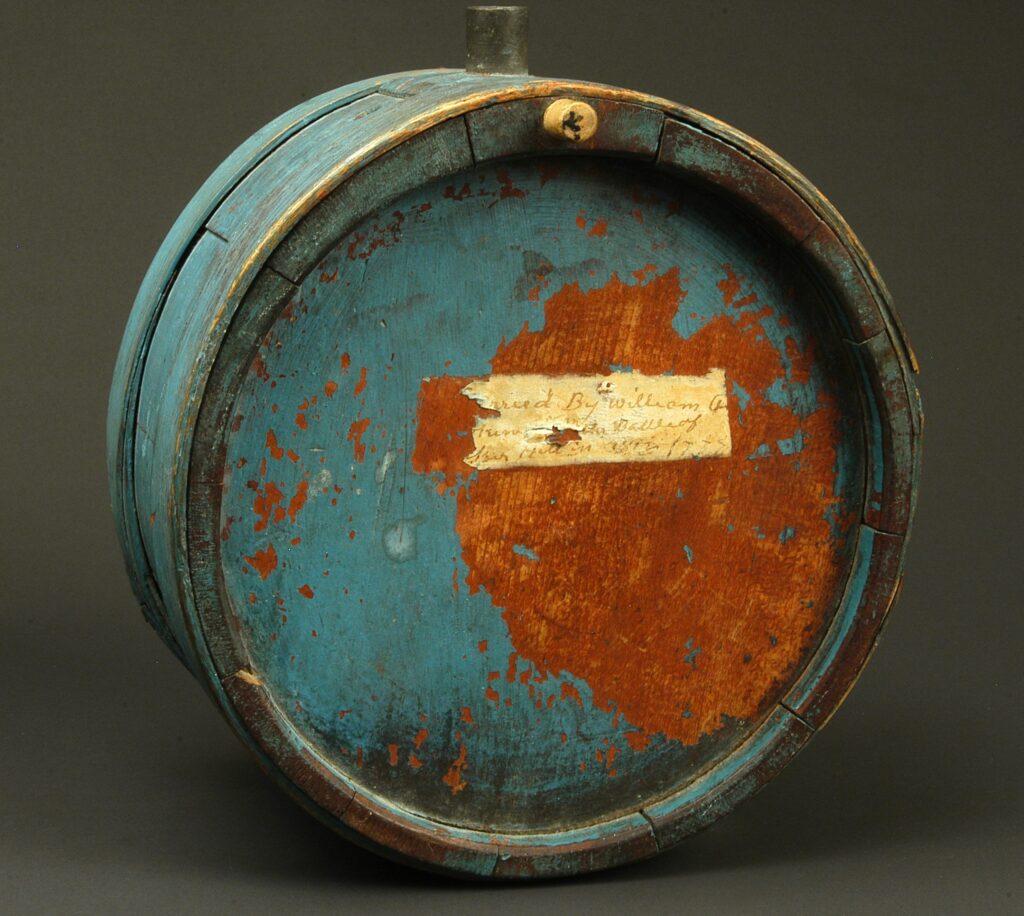
Canteen
American
Late 18th centuryMuseum Acquisitions Fund purchase, 2005
American stave canteen owned by William Adrian Hawkins (1742-1817), an officer in the New Hampshire Continental Line during the Revolutionary War, made in the late 18th century. Drum-style canteen with twelve wooden staves encompassed by two bent hickory straps, one with single fingering. Has an iron spout and nails and two wooden pegs. Painted blue, with areas of red paint visible underneath where the blue paint is missing. A partial paper label pasted on one side reads: "[Ca]rried By William A. / [Haw]kins d[ur]ing the Battle of / [Bun]ker Hill in 1812 1775." The handwritten ink inscription seems to have originally had the date 1812, which was later corrected to 1775 in graphite in a different hand.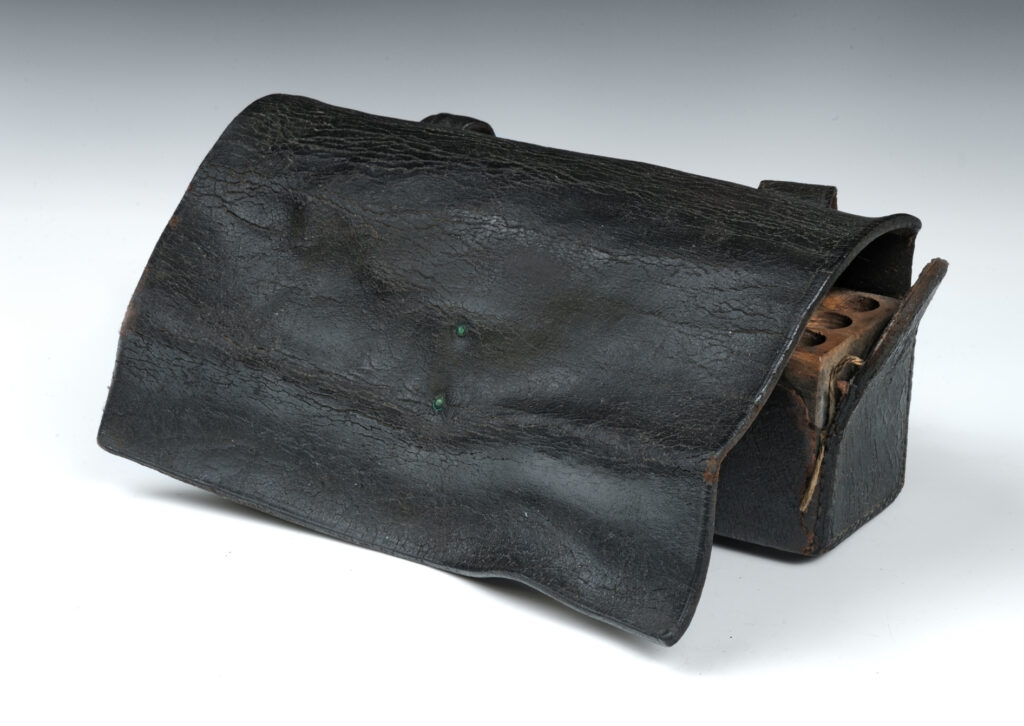
Cartridge box
American
Late 18th-early 19th centuryGift of John Sanderson du Mont, New York State Society of the Cincinnati, 1994
Early American musket cartridge box, late 18th-early 19th century. Rectangular pine cartridge block with 24 holes for .69-caliber musket cartridges set in a leather box and flap with a reconstructed brass catch and clasp. Belt loops are sewn to the back side of the leather box. One early paper cartridge remains in the box.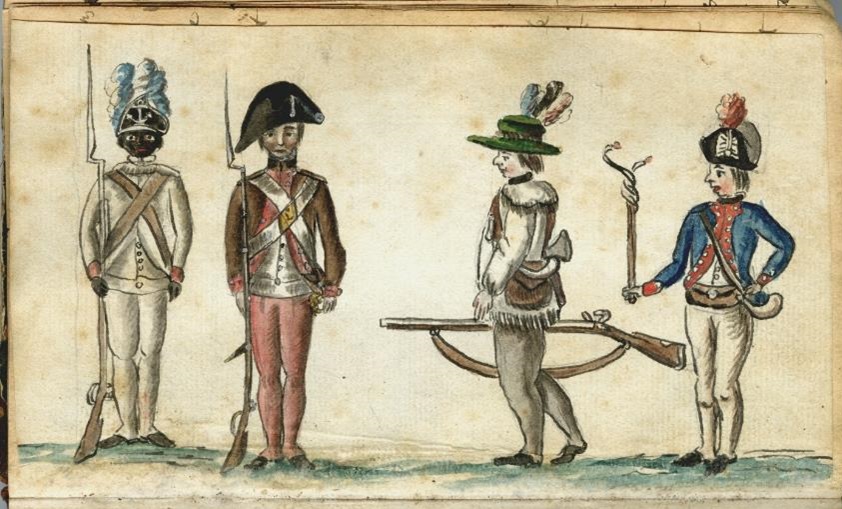
Soldiers in Uniform
Jean Baptiste Antoine de Verger
1781Anne S.K. Brown Military Collection, Brown University
This watercolor was madee by a French officer who served with the combined American and French forces during the Yorktown campaign. Among the four soldiers depicted is an African American member of the First Rhode Island Regiment.

